2015 Beta 350 RR EFI
Fuel Injection Comes To Beta
MSRP: $9399.00
- Beta makes one fun and powerful 350cc motor and the FI just makes it better.
- The handling is flickable and stable, a rare and welcome combination.
- Its overall usefulness isn't compromised by its ability to be aggressive in nature.
- We are still learning about the durability of the Beta though it has been by all accounts and our experiences excellent.
- Sachs suspension is still on the unfamiliar side for most riders.
- The Beta is definitely heavy on the scale yet it is difficult to feel when riding.
Introduction
- The first Beta four-stroke with EFI.
Beta has been a conservative company in its recent dirt bike history. The path of using proven and familiar technology and getting it to work as best as possible has always taken precedence over having the newest technology. And when that technology isn’t so new, likely proven and accepted, it seems to pop up on the Beta lineup. Hence the addition of Fuel Injection to the 350cc RR, the only Beta to get Fuel Injection in 2015. Then rolling all of the modification that showed up in the production 2014 Factory Edition 350 (Note: FE did not have EFI) into the standard RR makes the machine even that much more refined and improved. They are not only just trying to be an alternative to a KTM, they are really striving to be better as well.
Changes
- Heavily redesigned engine looks like the old one but is lighter and smaller.
- Suspension upgrades for 2015.
- Synergy FI system is new to dirt bikes and has a stepper motor to control compression braking.
The big change is to Fuel Injection for 2015 and even the brand of FI is a change, Synerjet. Using a 42mm throttle body and ECU system from the company, the Beta is looking for some performance advantages along the way. One of the unique technologies of the Synerjet system is the use of a stepper motor to be able to tune the characteristic of engine braking. The next evolution of fly-by-wire FI does this without you knowing it and this is a way for a classic cable-operated butterfly valve to accomplish this feeling aside from just ignition timing tweaks so it can be much more effective. So on closed throttle deceleration the stepper motor allows some fuel and air as if the throttle is cracked just a bit. The system is tunable with software through Beta. Synerjet is not new to the FI market but young to dirt bikes, yet parent companies to Orbital and Continental Automotive show the company is deep in resources. Like the carb business, FI has been dominated by only a few companies building fuel/engine management systems.
The motor looks very similar to the previous 350 but inside and out there are significant changes. Keeping its bore, stroke and displacement figures the same, the cases have new die-castings that reduce weight and cut the number of gears turning oil pumps. Oil chambers have been tuned to reduce pressure with the cases stiffened at the same time through bracing. This allows the motor to rev easier with reduced friction with even more changes to the balance shaft for the same reasons. Changes in the design of the piston to a "box-in-box" style which comes from Formula One and is claimed to reduce vibration and add performance. The piston pin is now coated with a Diamond-Like-Carbon (DLC) treatment to minimize friction and wear. The crank has new lighter shoulder design to reduce mass and inertia.
Up top the cylinder head is redesigned to a smaller overall size with new port shapes and updated cam profiles in the DOHC head. The cylinder has improved water jacket channeling for improved cooling. One of the welcome changes is to a stronger starter motor to spin the engine easier and quicker for faster and more consistent starting.
On the chassis side of things the bike remains largely unchanged except for an upgraded suspension package with the focus on better action and less stiction in the components. The 48mm Sachs fork is the most changed with both piston modifications as well as bushing alterations to help on the initial movement of the sliders. The Sachs shock has piston and valving changes to match the fork.
Power
- A very smooth yet powerful delivery with excellent mid-range and top end pull.
- FI gives the bike added pull from lower in the revs to even higher before sign-off.
- This engine has all the characteristics in power of a factory-level 250F race engine.
If there was an area where Beta was strong, it was in smoothness and the overall amount of power output of their 350cc engine, even the carbureted version. The plan all along was to not to lose any of that in going to Fuel Injection. And they didn’t. Improvements include quicker starting from the revised starter to the immediate clean and settled idle even on a cold morning, the usual benefits of FI are apparent to the Synerjet system. Throttle response is crisper than ever and much more immediate than the carbureted version, which was excellent on Betas in the past.
The joy of a 350 is the abundant torque for a “smaller” four-stroke right off of idle and the ability of the bike to be ridden at a lower RPM and resist hesitation in a roll-on situation where a 250F often suffer if not outright bog. Then the long and powerful pull as the RPMs seem to climb forever. The mid-sized Beta packs in big bike torque with little bike RPM and the FI system only enhances these characteristics. It pulls off the bottom from a lower RPM better than before and resists bogging down much better than we remember. Where there was a slight hesitation on the carbureted bike, that is nearly non-existent now. Yet there seems to be some carbureted character built in to the FI systems delivery as there is a small bit of lag or hit if we are being really picky. So the feeling isn’t so foreign to someone used to either carb or FI.
The mixture is spotless from the moment the bike starts building revs all the way to the very ceiling where there is a gradual taper before you are ready to grab the next gear. Power is plentiful up top but its sweet spot is in the mid-range where the pick-up is impressive, fun and controllable. If you ever wanted to know what a $20,000 250F racing motor runs like, this Beta does it with just a little extra displacement. Hitting the rev limiter never happened in our testing. If there was any issue with the FI, the system can become a little confused when engine temperatures start to elevate in very tight and technical riding situations. At zero and just off-idle throttle positions, is can act like a carb and not deliver the perfect mix like other FI systems typically do.
We loved the way the RR utilizes just enough compression braking to aid in slowing but not disrupting a smooth feeling from hard-on to hard-off the throttle. A trait that can be disruptive on a high-rpm bike. We were not able to tune the stepper motor through the bike’s ECU as the software is expensive and it will likely be a dealer-only tool. But Beta has plans to allow a “rental” of the system and we’ll definitely give it a go if we have the chance. Adding additional compression braking for trail riding or taking some out for a more race-like setting is a tuning tool that could pay dividends in addition to all the usual characteristics that altering FI and ignition settings can provide.
The six-speed transmission took a little time to break-in and shifting improved as we put more hours on the the bike and especially after the first transmission fluid service. The engine, like current Honda and older KTM four-stroke designs, has a separate transmission and engine oil sections to keep contamination to a minimum and allow use of specific oil types if you desire, and a filter on each side aids in keeping the oil clean. The gear spacing is very linear and wide enough for GP or off-road racing use without compromise on either end of the gear spread. With standard gearing the bike will crawl in first gear technical sections without much clutch use and top out at roughly 85 MPH where the speed is limited slightly by the gearing on level ground. The hydraulic clutch is superb in both feel and pull at the lever and resists fading even when being put to work. Though the starter has been improved and more powerful, in-gear starting takes a few rotations so dead-engine race starts might be better with the kick-start lever. There seems to always be a slight amount of clutch drag. And having a kick-start as a back-up is reassuring.
The exhaust note of the RR has a race tone but is quiet at the lower RPM levels. The muffler is spark-arrestor equipped and feels pretty unrestricted, for sure it works in unison in the engine package to produce a great, rideable and very strong mid-range power character.
Suspension
If there is an area that has been and will still be an easy target to take stabs at the Beta, it will be in the suspension department. Sachs is not a Showa, Kayaba or even a WP so it is ripe for a ripping from those quick to dismiss a non-named brand component. Overall the fork and shock are really not that bad, actually quite good. If a rider is willing to take the time do proper setup after they break in, they perform as well as some of the other makes out there and have a unique setting that some riders prefer, while other riders may fight with.
The setting has a stiffer initial stance, or hold-up to the components--then they like to move through the stroke a little easier than most. It is far from “blowing” through the stroke as there is definitely some damping control on both ends and a noticeable increase in compression just before bottoming, which is decent. The fork is very sensitive to rebound adjustment and will harshen up quite a bit as the rebound adjusters get turned in too far, or close to being closed off. The rear shock has a very standard feel but the adjustment takes 3-4 clicks to make the kind of change a single click on another brand will do. The high-speed adjustment on the shock is also effective and will give the sensation of raising the rear end up as well as controlling a sharp-hit or high-speed movements of the shock. It can tone down the stiff sensation but we found as you compensated softer with the shock setting, the front end feel will suffer in a harsher feeling. Additionally the rear shock can become hot and fade in punishing conditions like pounding whoops. We would have liked to re-test the shock after a break-in service with improved fluids to eliminate variables. This is something we will do and update you later.
The issues arise in that the Beta feels really good for heavier riders as it holds them up until their weight really pushes the bike through the stroke and it bottoms, a rider who really needs stiffer springs in the first place. Lighter riders just do not like the initial stiffness of the setting. It is not stiction as the fork and shock will move freely, but opening up the compression and rebound cause the bike to get a bit wallowy and will let the chassis yaw front to back a little too much to be comfortable, especially in aggressive riding. What it really comes down to is the Beta has a narrow window of rider weights the bike will work properly with stock springs and valving, we estimate that to be between 170-200 lbs.
Chassis - Handling
- The Beta has a light flickable feel that makes it easy to put the bike where you want it.
- Stability is excellent as if there were more rake and a lot of trail, even though the spec sheet and measurements says otherwise.
- The ride is very balanced if you are in the bike's target weight range.
The 350 RR also has a unique and polar handing character that seems to be a love it or dislike it affair with most who rode the bike. It comes from the layout of the frame and handlebar position and what we feel is a trials-based influence in the design. Plain and simple the bike acts like it has a lot of trail in the steering. But in reality the footpegs are a good couple of inches farther back in relation to the engine’s crank center than most bikes and the crank is even a little bit lower. Add to that the fact that the adjustable-position triple-clamp and handlebar’s bend put the bar in a higher than normal position and even a slightly narrower cut to the bar. This makes a few things obvious. The riding position of the bike is very roomy for even larger riders even though it feels like a small bike. Smaller riders find that sitting has the bars a little high and standing is the best way to make the bike work. And standing isn’t all that bad as the seat on the Beta is basically rock hard when riding even though pushing on it you’d never get that feeling. And yes, Beta claimed the seat foam was softer this year.
The benefit of this open riding position is that the bike is very easy to put into turns and maneuver with foot movements. Yet for a bike that is so flickable the handlebar and steering remain very stable giving the impression of a lot of trail. When you are turning the bars they have some weight in them and the bike feels very planted, even with the stiffer suspension feeling. While riding tall in the stroke the RR will still hook into turns like a bike that is squatted and crushed, jousting from side-to side is very easy and effortless. It tracks with the front tire and predictably slides. When pushed the bike does not do funny things or get wound up.
Riding on hard rough ground the 350 RR will dance a little more than most and setting the ride height, not letting it get too low, will pay dividends in getting the fork to work the best it can, allowing the rider to dial in the feel with compression and rebound adjustments. On loose rough ground that same feeling of stiffness is there yet you can trust the bike to go where it is pointed and not deflect. The chassis has a stiff nature in feel but it does not act like a motocross bike would in off-road conditions, MX bikes tend to deflect rather than track and absorb. The Michelin Enduro tires are not what most American riders prefer but the traction is decent all the time and they wear well. If anything they are consistent and very responsive to air pressure in both traction and bump compliance.
The 2.0-gallon tank is slim and the bike is easy to move around on, moving far forward or back is very easy on the Beta. Being lower the pegs do not seem to hit on anything extra though the brake pedal and shifter are a little farther forward than on most bikes. Ground clearance is good and the shock linkage is tucked up as good as can be expected. The bike also has a longer feeling and it is noticeable when lofting the front wheel—it comes up slower but when it gets going it really gets going, like a pendulum. This is mostly related to the engine position being forward. Then there is the weight. The Beta is claimed at 234 dry but we’d bet it is a lot closer to 250 ready to ride. (The DBT certified scale is coming soon.) Overall the 350 RR it has a very light feel at all times, other than lofting the front wheel high in the air, you will think it is light on the scale too.
The brakes are strong and progressive in feel, using Nissin components and high-quality braided steel lines. Things like the brake pedal and shift lever are high quality and have a shape for minimal weight. Parts like the kickstand and aluminum skid plate are durable and not noticeable until you need them. As for fuel range, we got an average of 30 MPG but that figure can range wildly depending on application. We nearly emptied the tank in 45-miles once but never got more than 65 without the tank appearing very low. The low fuel light is not very accurate, sometimes coming on with as much as a half-tank still available—that was a scare the first time. The trip/odometer is simple and the RR has a horn if you like to surprise riding buddies, cows or dogs.
Conclusion
- The Beta offers another choice to the Orange (and now White) Brigade.
- There isn't much to complain about if you are an ideal 350cc sized rider, especially in weight.
- You are out of luck if you still want a carburetor.
The Beta 350 RR EFI is selling for $9399 making it one step closer to the $10,000 dirt bike. At this price level, a few hundred less than the competition, it is a serious purchase where you demand everything to be just right. For those looking for the qualities a Beta poses, there is no excuse.
We have not had a Beta around for a long-term test and this may be the bike. Even by the companies admission the 350cc four-stroke and its four titanium valves make it the highest maintenance bike it produces, but Beta is not scared. This way we will be better able to comment on durability, which so far in all our years of testing the Italian bikes has been spotless. Basic maintenance like the air filter removal, tool-less even in the tight confines of a crowded air box is simple. Even changing the dual engine oil compartments and getting to the filter is only complicated by the need to remove the skid plate. More serious needs like valve adjustment and parts replacements are manual specified at the typical lawyer mandated intervals but we suspect the bike can run all year before needing attention. Even the seat comes off with the push of a button, no tools needed. And hidden in the composite sub-frame rails are a few tools in the event you need them trailside.
You are not just getting a bike that is different looking, it acts different. The bike works as a package that is definitely happier in the faster and flowing riding as the engine is very magical and it loves to be ridden hard. The chassis and suspension have the type of setup that has safety at off-road racing speeds for most riders yet is still more comfortable than a motocross bike. It has no issues doing putt-putt trail riding since the torque is so good and we suspect with suspension alteration and some FI tuning of the very bottom end it would get even better. Cleaner, crisper and smoother, yet that power is often mistaken as slow too, something that the Beta is not.
If you are looking for a 350cc trail bike/off-road race bike that isn't Orange or White with an Orange aftertaste, the Beta is the only option. It is accomplishing a task of being competitive in every aspect of performance so it comes down to small character differences as to whether it is better or not. In reality it would take back-to-back riding on the same location on the same day to make that call. We had the Beta out with a KTM 350 EXC and the Beta made the Orange bike feel slow, tiny and a bit unstable, traits the KTM does not show when ridden alone. Comparing it to a XC-W or an XC-F would likely yield different results as the Beta seems to sit right between those two models in its target audience. It seems most like the Husky FE 350.
Being different is often difficult. And it grabs attention.The Beta 350 RR EFI does both and there is no reason to be ashamed.
To see our first long Term Update on the Beta 350 CLICK HERE
Recent Product Tests
What Others Said

https://www.youtube.com/watch?v=lh77MksUk7g

http://enduro21.com/index.php/component/k2/item/1977-tested-%E2%80%93-2015-beta-350-rr

http://www.totalmotorcycle.com/motorcycles/2015/2015-Beta-350RR.htm
Leave a Reply
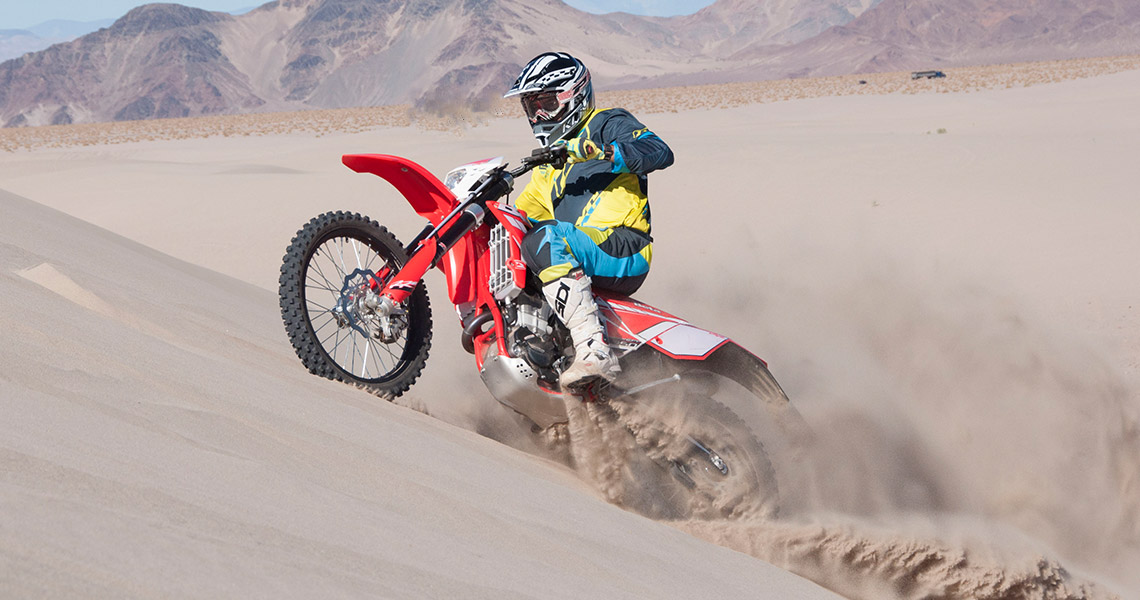
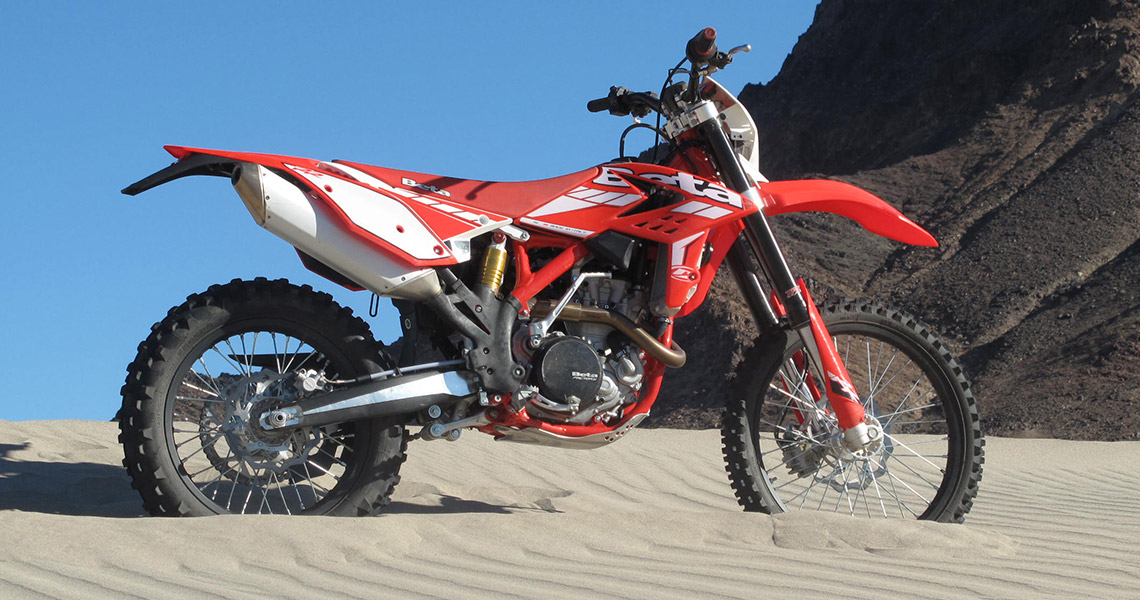
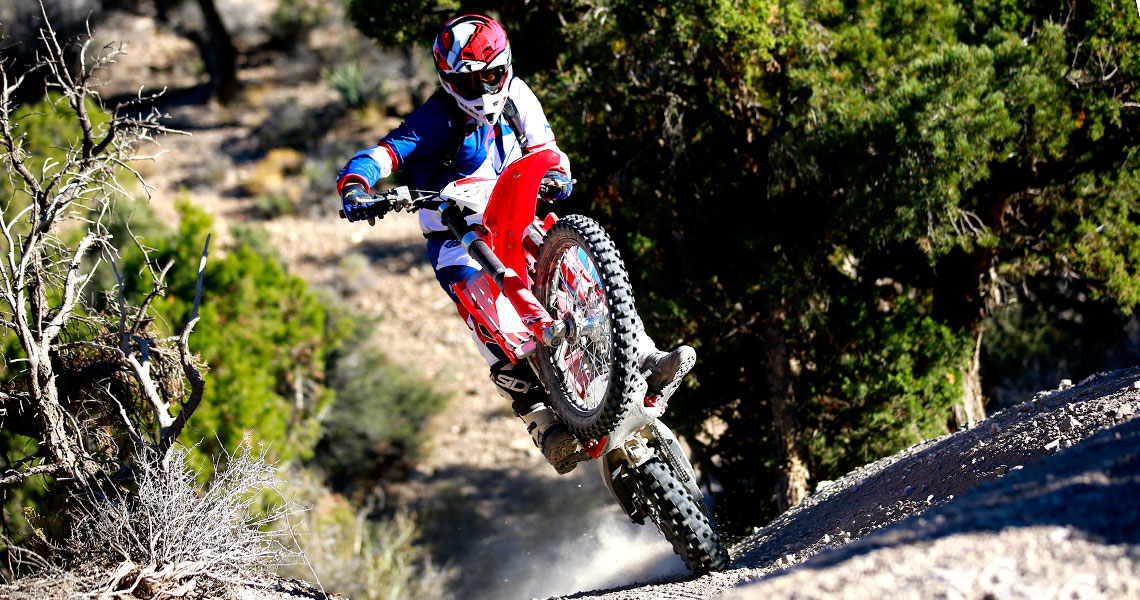
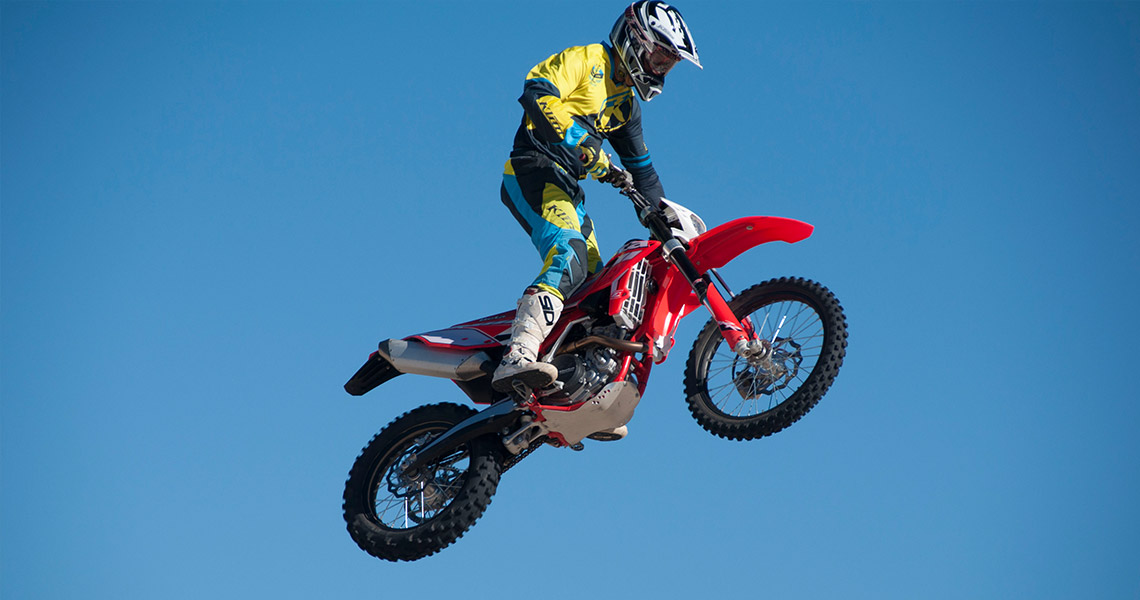

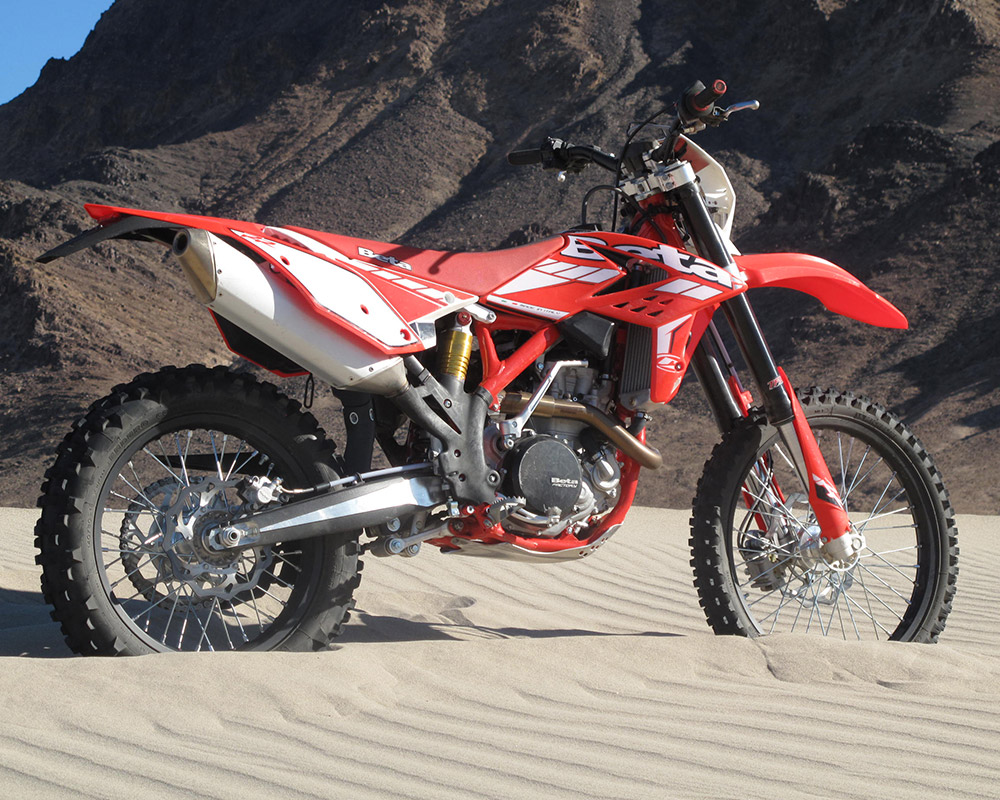
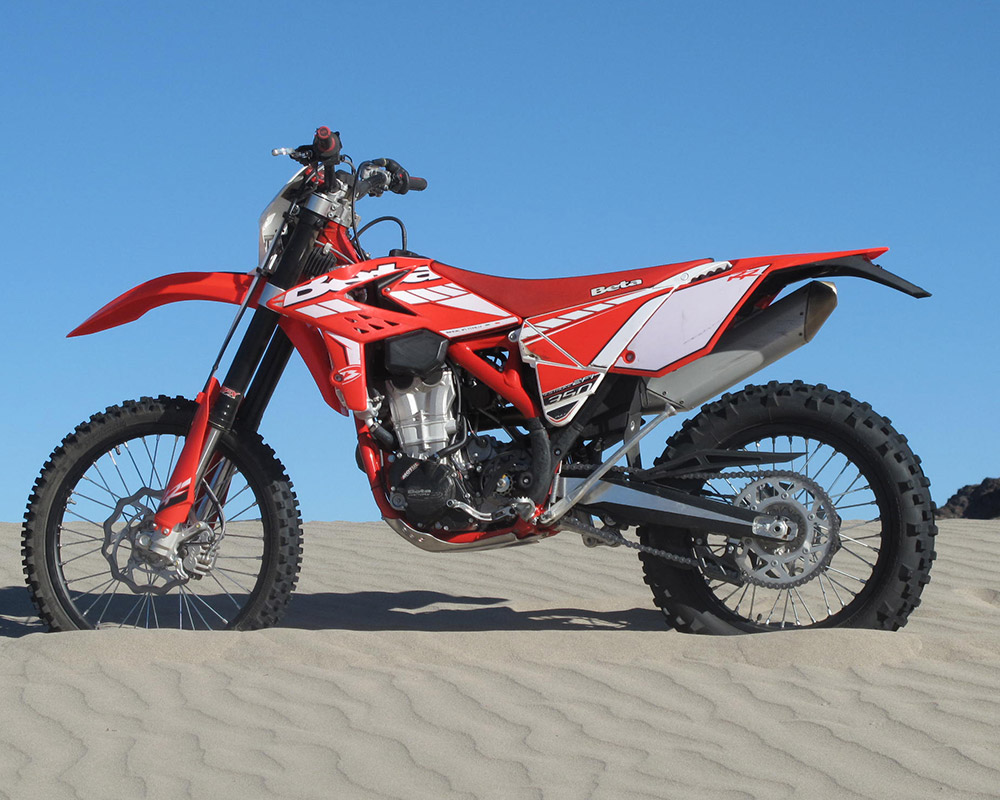
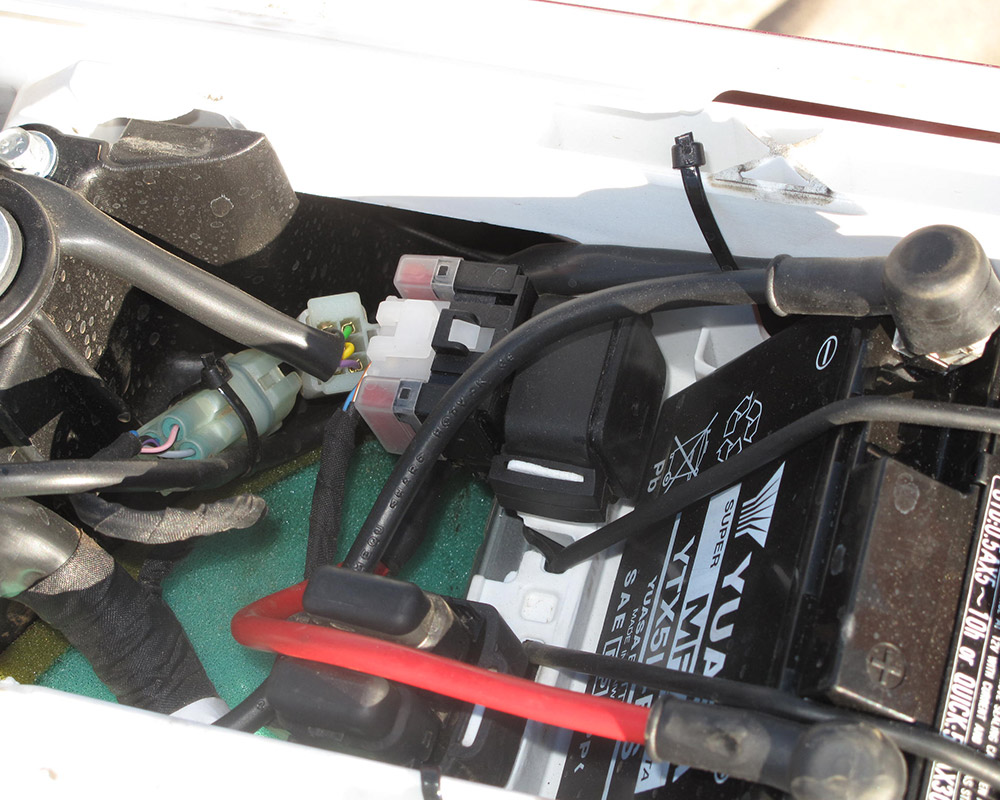

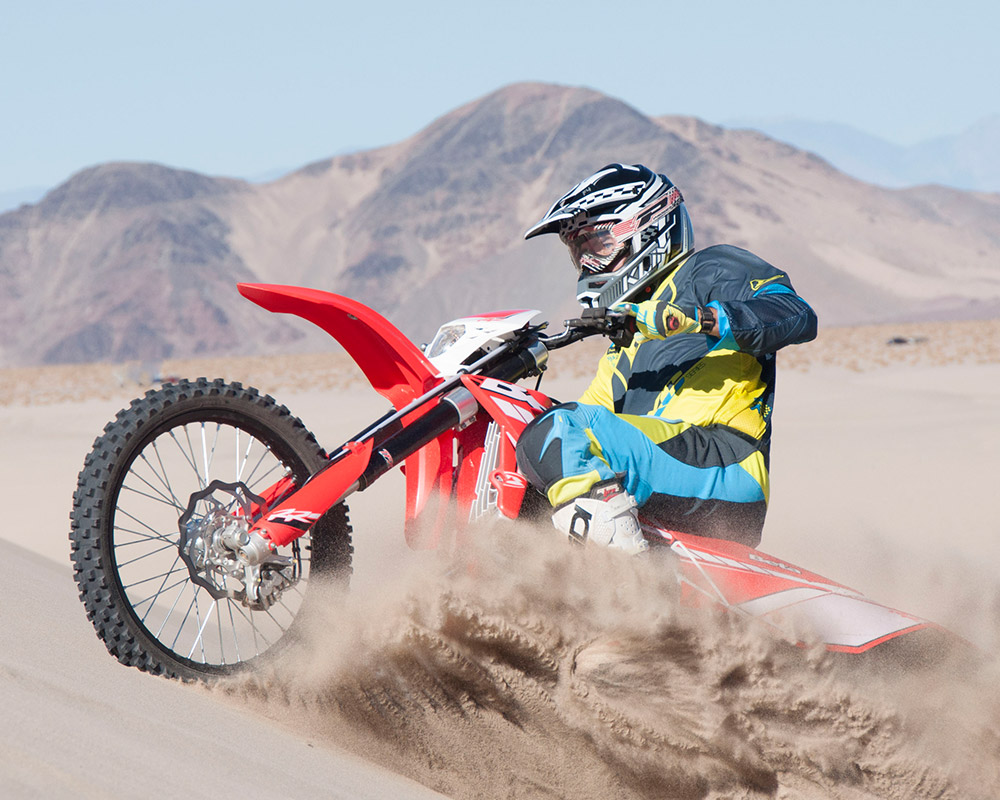
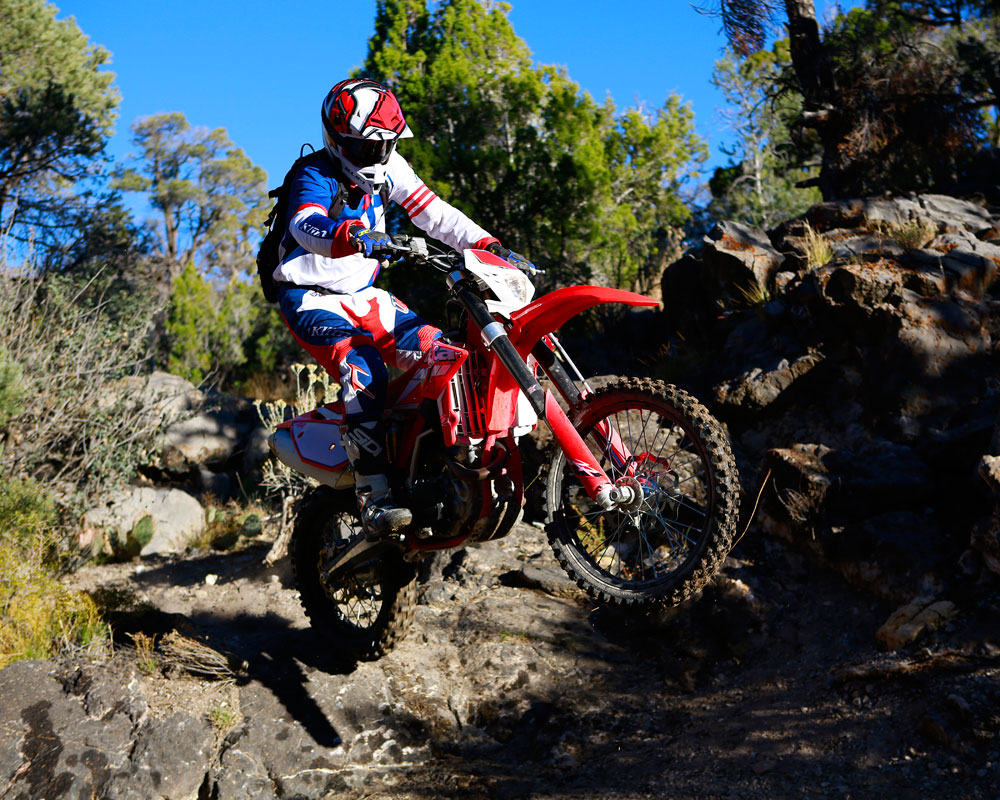

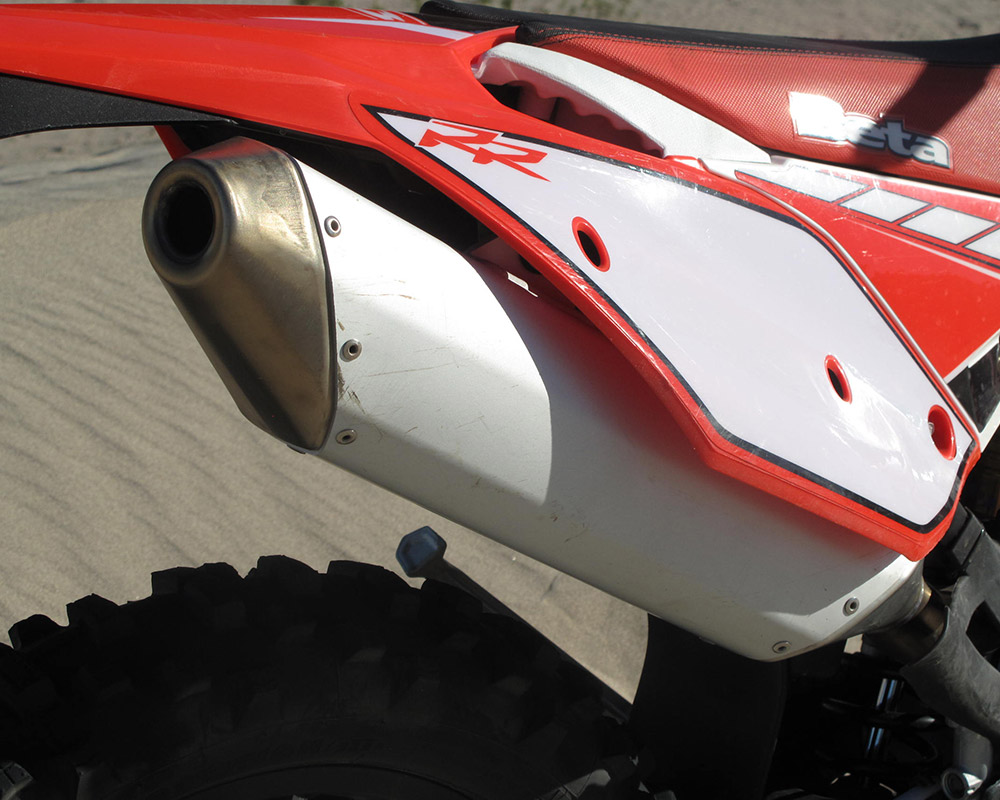

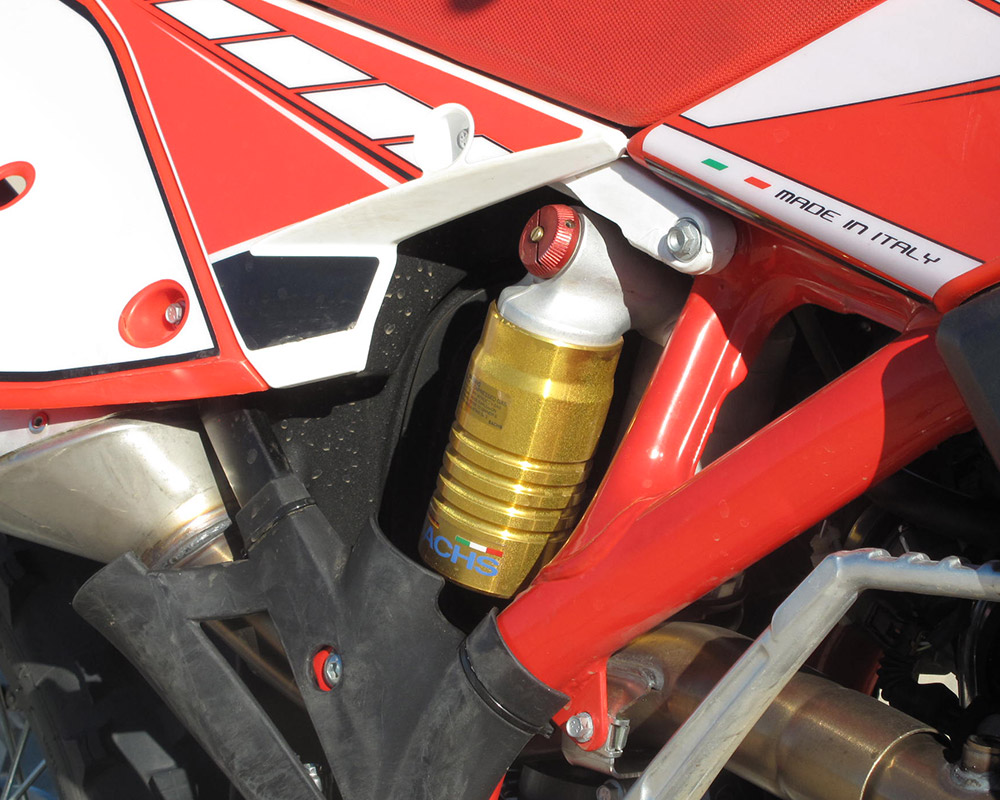



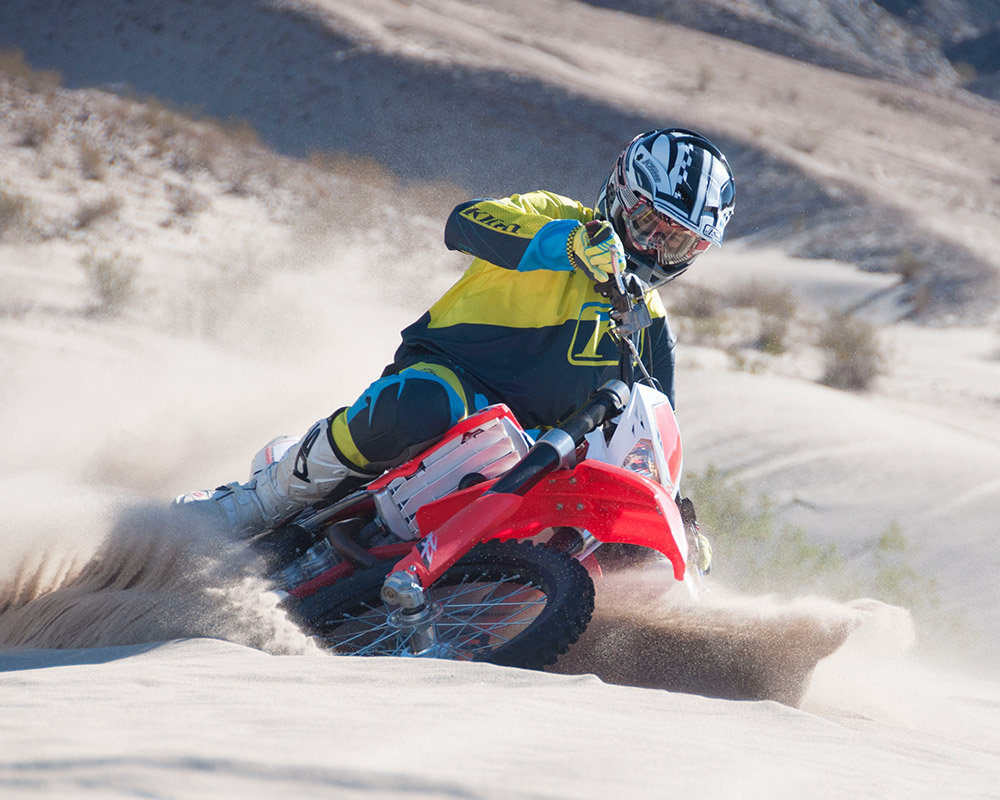

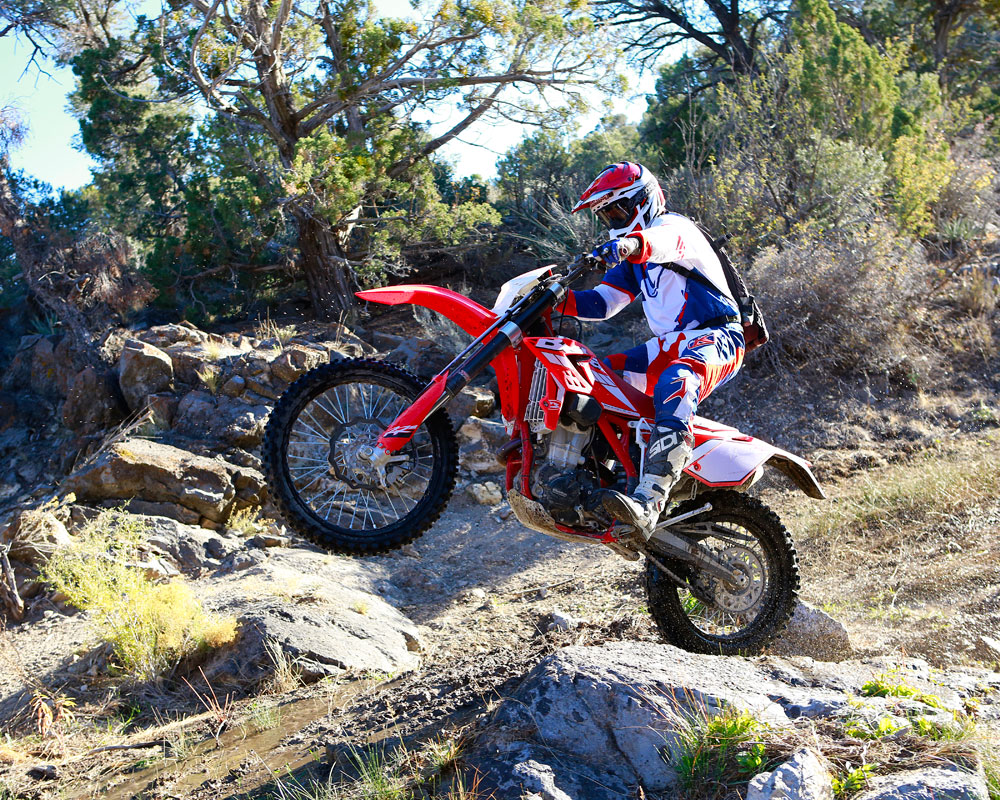
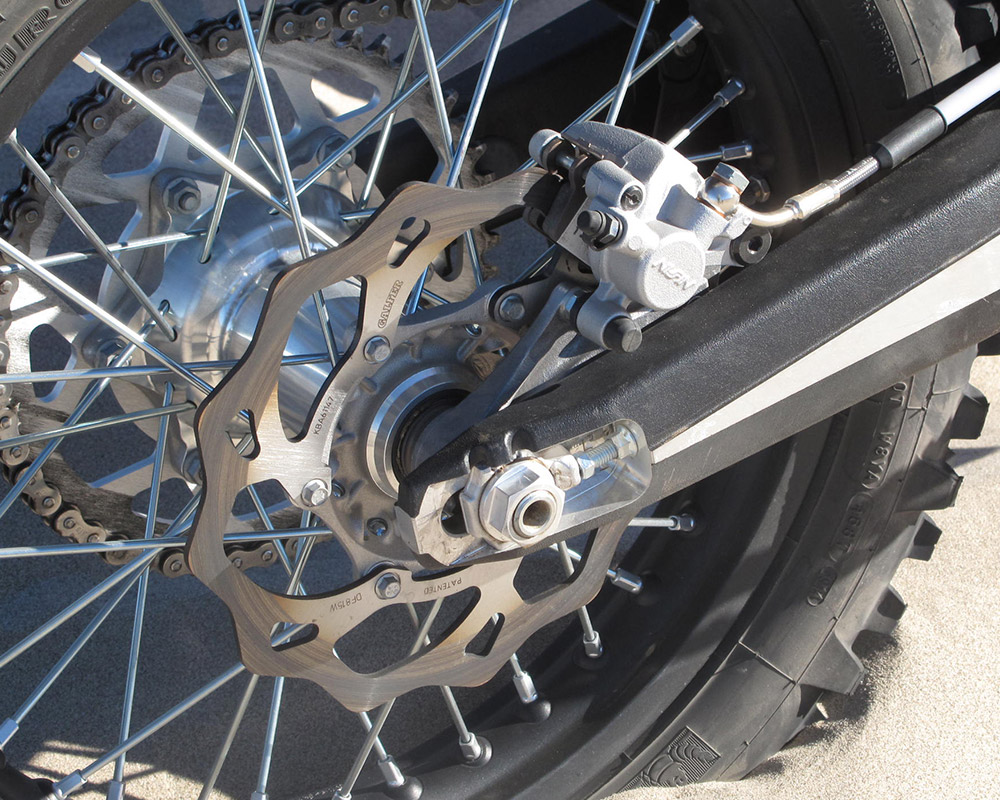
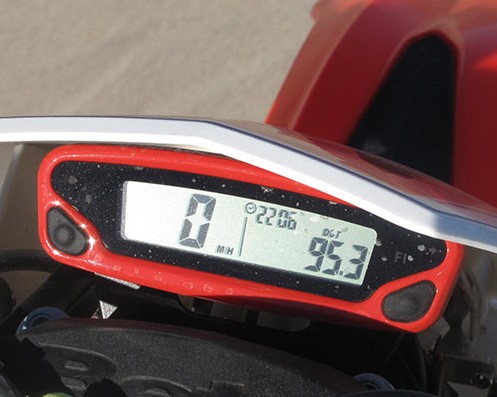

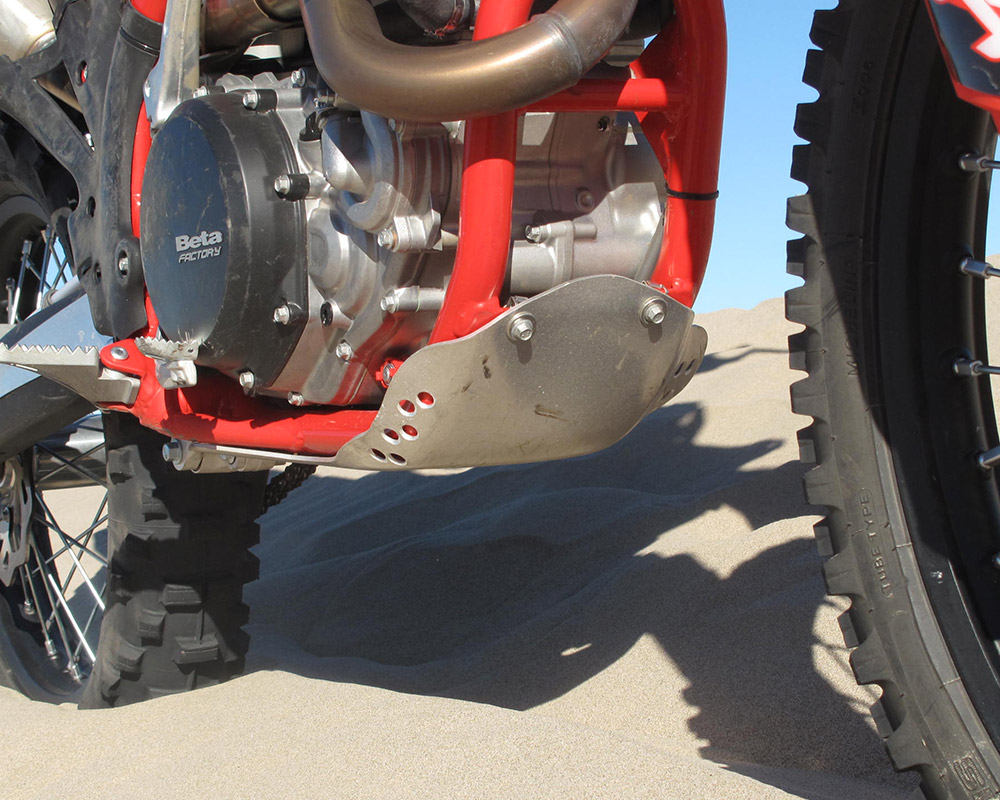
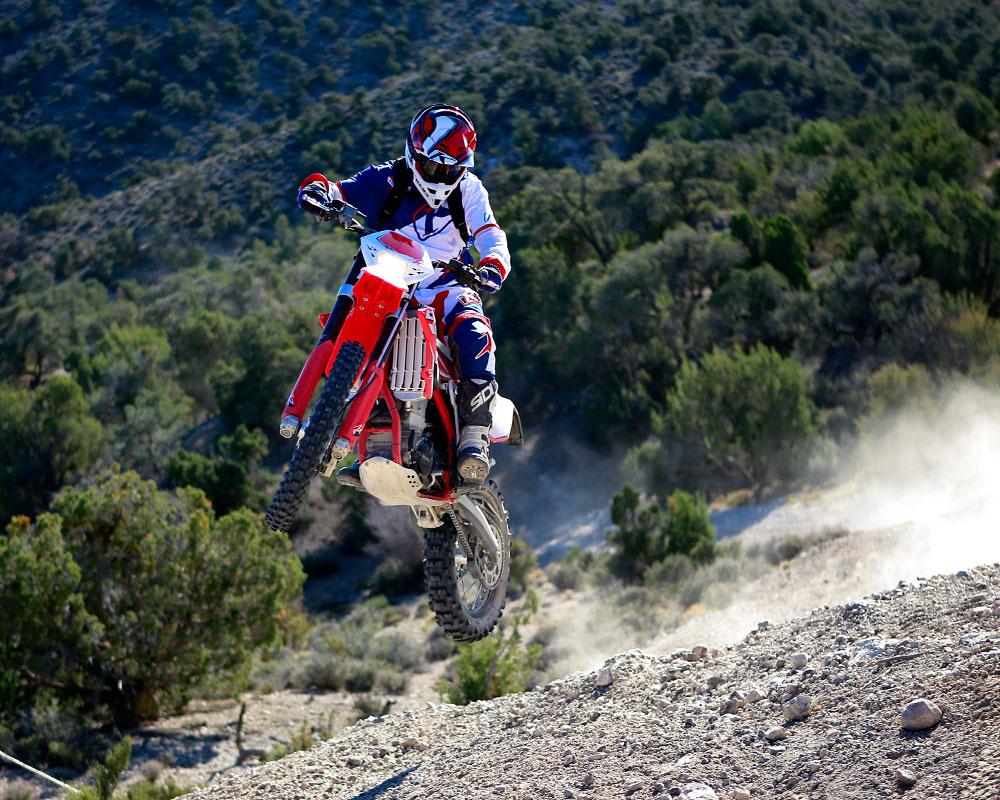
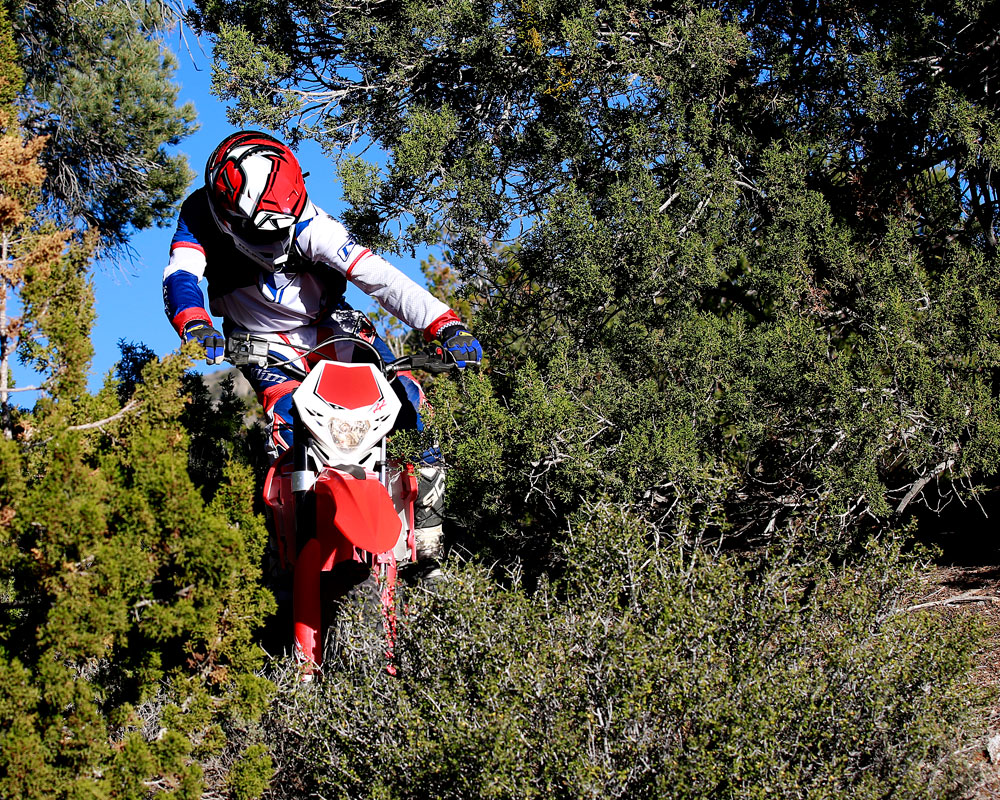


3 Responses to “2015 Beta 350 RR EFI”
Jeffrey Irvin
Great review Jimmy, very detail oriented. It mirrors my own experience with my 2012 Beta 350RR. At 6’4″ and 225 lbs the Beta 350 was the first dirtbike that actually fit me, and with some minor re-valving and re-spring for my weight, the suspension was fantastic. Riding the Beta 350RR made me a better rider. Looking foward to more unfiltered, unbiased, motorcycle and gear reviews.
Jimmy Lewis
So we’ve serviced the suspension on the 350 and have noticed an improvement in the rear shock. This is normal for most bikes, yet on this Beta and specifically the stock Sachs shock it really improved how much pounding the bike can take before fading. Now we’ll likely work with Stilwell Performance to see what valving for specific conditions can yield. Otherwise loving the ride!
Sotiris Labrou
Exactly what I’ve felt after servicing the shock on my 2014 RR300Racing after 30 hours.
OEM oil looked new but after using some very high quality oil, it felt almost like a re-valve.